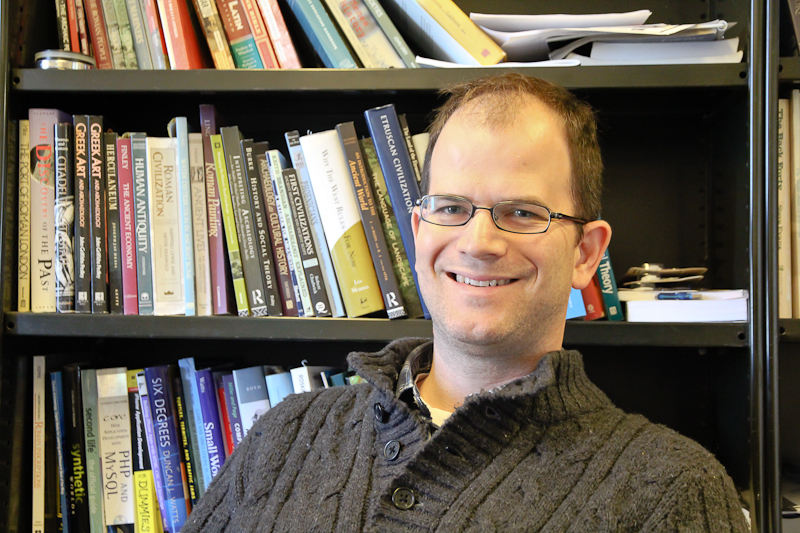
Carleton professor Shawn Graham will be writing a textbook, but not in the usual way.
The book, “The Historian’s Macroscope: Big Digital History,” is being updated in an unusual format—online and piece by piece, similar to posts on a blog.
“We have decided to live write a handbook on big digital history and to write it in such a way that it remains timely and reaches its intended audience for feedback before publication,” Graham said.
“What I hope to get out of this is a volume that is responsive to developments,” he said.
Graham said the process from final draft to publication can often take a long time.
“When I’m dealing with a digital methods book, the things that we’re using this year might be out of date next year, so it’s important that we move fast,” he said.
There are currently over 40,000 words written of the book, and Graham said more than 13,000 have been published online.
The book examines how different digital history techniques can be used to find data larger than what is normally used in order to get a better understanding of cultural history.
Graham said readers will be able to post comments on the chapters they read. This not only notifies the writers of anything they missed and gives them feedback on the work, but allows the readers to communicate with the writers in a way that reading a printed textbook does not allow.
Graham is writing the book with Scott Weingart, a PhD student at Indiana University, and Ian Milligan, an assistant professor at the University of Waterloo.
He said they hope writing the book publicly will allow information to be shared more quickly and to a larger audience.
“By writing in this fashion, on this platform, we end up creating a really strong signal in the noise of the Internet, so when ordinary folks are trying to find something, Google or Bing or whatever will pick up those signals,” he said.
“Our ideas will percolate much more deeply than if we write behind closed doors and publish it in a volume that only university libraries would purchase,” he said.
“The Historian’s Macroscope,” described on its website as “the-draft-that-you-might-show-trusted-friends-after-you’ve-been-at-it-a-while” will eventually be published in textbook format aimed for higher-level undergraduate and graduate students. Graham said it will also be used in the 2013-14 school year as a textbook in one of his second-year classes.
“A book doesn’t have to be pieces of paper bound between cardboard covers,” he said.
“A really good book is something that you as a reader engage with and enter into a conversation with, even if it is one sided. A digital book, especially using this kind of platform, is a way for the readers and the writers to create this volume together,” he said.





